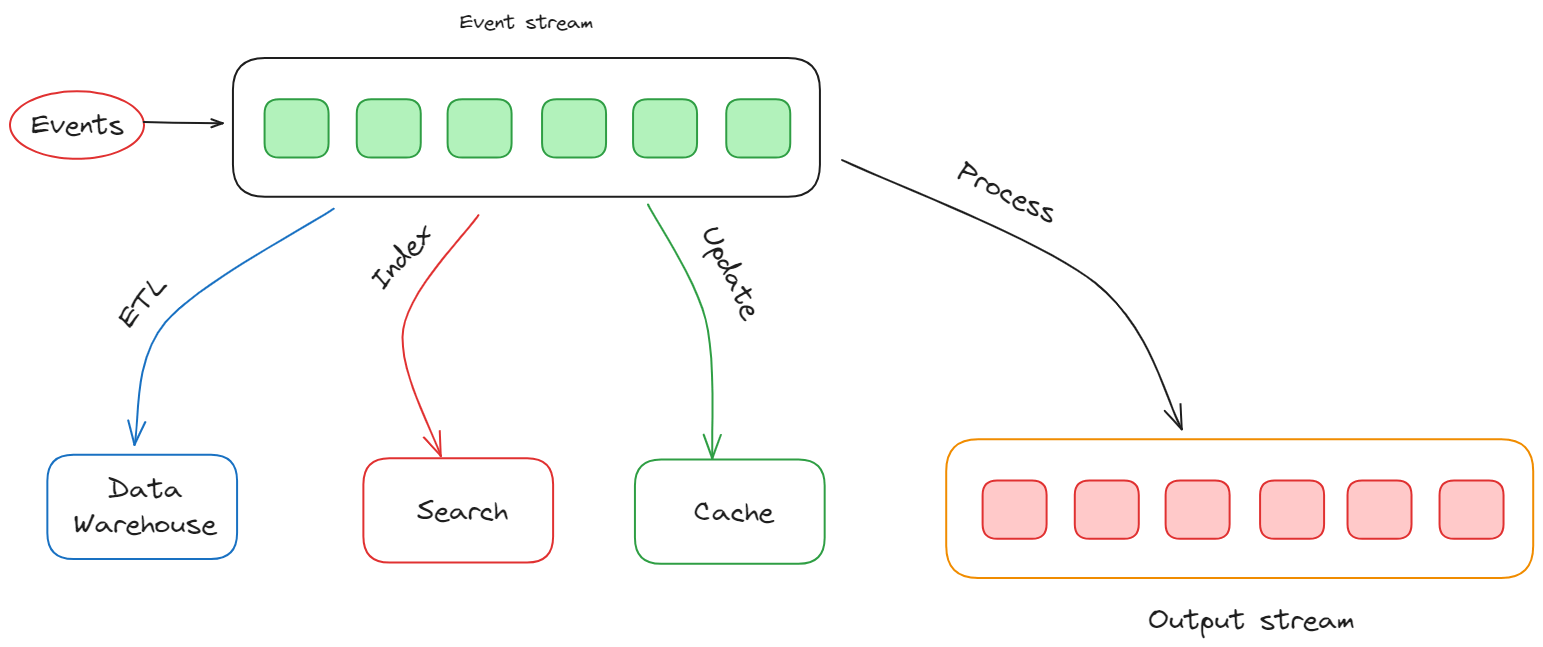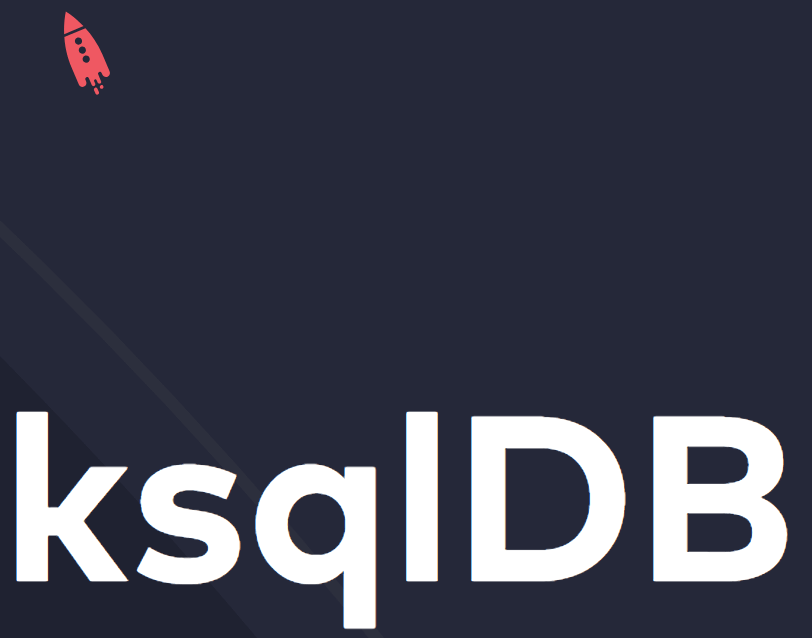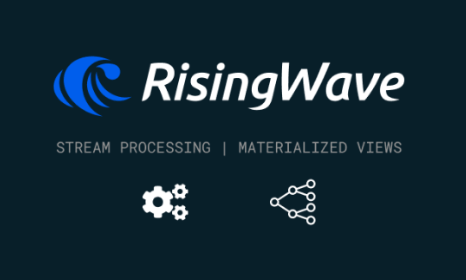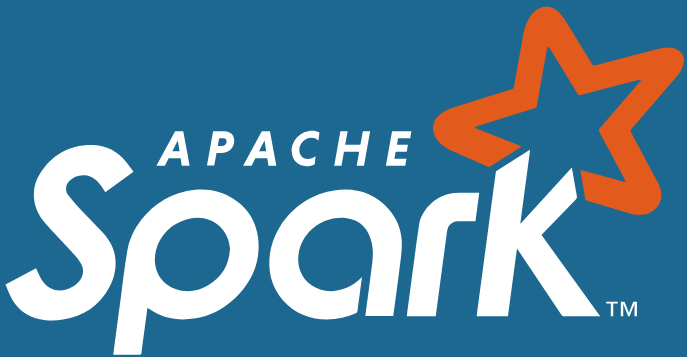Choosing the Right Stream Processing System: A Comprehensive Guide
This article defines what stream processing is and provides a guide on how to choose the right one that suits your needs.
Join the DZone community and get the full member experience.
Join For FreeIntroductory note: This article has been co-authored by Federico Trotta and Karin Wolok.
Introduction
In a previous article, we presented the fundamentals of stream processing.
In particular, we’ve defined what stream processing is and how data are computed in streaming processes. We’ve also presented stream processing use cases from real-world scenarios.
In this article, we’ll discuss how to choose the right stream processing system suited for your specific needs.
TL;DR
Stream processing systems handle and analyze data in real time, offering immediate insights and responses. Key characteristics include:
- Real-time processing
- Event-driven architecture
- Scalability
- Fault tolerance, and low latency.
When choosing a streaming system, consider:
- Business requirements
- Performance metrics
- System architecture
- Integration
- Ecosystem support, and community backing
The commercially available solutions on the market:
- Apache Flink provides precise control over stream processing, high scalability, and a rich ecosystem.
- ksqlDB is a simplified SQL-based streaming system. It provides perfect integration with Kafka and is suitable for Kafka-centric environments.
- RisingWave is designed for massive data volumes, utilizes a streaming SQL engine, and presents a scalable architecture.
- Spark Streaming provides micro-batch processing within the Spark ecosystem, with a balance between real-time and batch processing.
What Are Stream Processing Systems?
Stream processing systems are part of a data infrastructure stack designed to handle and analyze data in real time, allowing enterprises for immediate analysis and response.
The key characteristics of stream processing systems include the following:

- Real-time processing: Stream processing systems process data as it is generated, providing real-time insights and analytics. Event-driven. Stream processing is driven by events or messages. In particular, events include a variety of different cases from different industries like sensor readings, log entries to user interactions, financial transactions, and more. Also, regardless of the kind of event, the system reacts in real time.
- Scalability: Stream processing systems are designed to handle high throughput, so they are designed to be scalable to accommodate increasing data volumes. For example, they can distribute processing across multiple nodes or clusters to ensure efficient data processing at scale.
- Fault tolerance: Given the nature of real-time applications, stream processing systems often incorporate mechanisms for fault tolerance. This ensures that even if a component fails, the system can continue processing data without significant disruption.
- Complex Event Processing (CEP): Stream processing systems often involve complex event processing, to analyze and correlate multiple events and identify patterns or triggers for specific actions. This is particularly useful for detecting anomalies or patterns in data streams.
- Low latency: Stream processing systems aim to minimize the time between data generation and analysis, providing low-latency responses. This is crucial for applications where quick decision-making is essential.
How To Choose the Right Stream Processing System?
Choosing the right stream processing system for your needs is not an easy task because you have to take into account several factors.
In this section, we provide a guide to help you consider the most important factors to consider.
Identify Business Requirements
One of the very first aspects to take into account when choosing a stream processing system is to identify what are your business requirements. This phase involves a thorough understanding of your organization's goals, use cases, and specific data processing needs.
The business requirements analysis can begin by defining the objectives that the stream processing system aims to address. This could involve enhancing customer experiences through personalized recommendations, ensuring regulatory compliance in financial transactions, or optimizing supply chain operations, just to name a few possibilities.
After that, you have to analyze the characteristics of the data itself, like:
- Volume
- Velocity
- Variety
To be more specific, the sheer speed at which data is generated (velocity) and the diverse formats it can take (variety) at a given volume impact the choice of a stream processing system.
The characteristics of the data, in fact, have an important impact on the characteristics of the stream processing system to focus on. For example, a system handling high-frequency trading data might prioritize low-latency processing, while a system managing IoT sensor data could focus on scalability and fault tolerance.
Also, when identifying business requirements, it's essential to consider the costs associated with the solution that has to fit your needs.
Initially, you can evaluate the upfront costs associated with acquiring and deploying the stream processing system. These include:
- Licensing fees for commercial solutions or any upfront investments required for open-source implementations.
- Infrastructure costs, such as hardware resources or cloud services.
- Operational costs, including maintenance, monitoring, and support.
Also, as scalability considerations are crucial, you should remember that they impact cost efficiency over time. In fact, a system that scales efficiently can adapt to changing data volumes and processing demands, without significant increases in operational costs.
Finally, you have to evaluate the subscription costs associated with the commercially available solutions that offer stream processing solutions.
Define Performance Metrics
Performance metrics are another important aspect of selecting a stream processing system, as they provide insights into how well a system meets the requirements of your business case.
In the context of stream processing, we can take into account different performance metrics like throughput, latency, and fault tolerance that have been introduced earlier in this article.
Other metrics to consider when evaluating the performance of a stream processing system are:
- Scalability: This metric evaluates the possibility of scaling horizontally by adding more nodes to the cluster. This is important for accommodating the eventual increase in data volumes and processing demands.
- Resource utilization: This metric evaluates how efficiently a streaming system uses computational resources. This includes CPU and memory usage, which directly impact the scalability and cost-effectiveness of the stream processing solution.
Evaluate System Architecture, Integration, and Make Operational Considerations
When considering a stream processing system, you already have software and an architecture that allows you to generate data in streams. Your goal, in this situation, is to integrate the existing software and architecture with a stream processing system for real-time data management.
In this scenario, you have to consider the following:
- Compatibility with existing infrastructure and data sources: The existing infrastructure you’re using to generate your data streams must be integrated with the stream processing system, so this evaluation is a primary concern to focus on. An error of this kind in retrospect can lead to a lot of nonessential coding hours, as well as unwanted money to spend.
- Usability of the APIs provided by stream processing systems: Some stream processing systems provide APIs to help users manage different sets of tasks like, for example, to connect the system with external sources. So, it’s important to verify the availability of the APIs to save a lot of coding time. In particular, an aspect to take into consideration is that stream processing systems may provide SQL-based APIs: verifying this availability will help early adopters in choosing one streaming system rather than another.
- Ease of development and support for common programming languages: As you already have a software infrastructure, you may want to remain consistent with it when integrating it with a stream processing system. In this case, you should take into account support for common programming languages as well as developer-friendly features before choosing a stream processing system. For example: if the stream processing system you’re evaluating provides libraries, verify these are available in the programming language you’re already using. For instance, prioritizing stream processing systems that provide SQL-based libraries helps early adopters feel more comfortable during their daily tasks.
Consider Ecosystem and Community Support
When you choose software, you don’t only need the software itself: you also need everything around it. This is also true in the case of a stream processing system. So you need to even consider the following:
- The ecosystem surrounding the stream processing system: This generally includes connectors, libraries, APIs, and various tools you can use and take advantage of.
- Assessing the strength and activity of the community supporting the system: In today's interconnected world, communities are making a difference, especially for brands and products. When deciding on a stream processing system, considering the strength and the support of a community can make a difference in solving actual problems.
Stream Processing Systems Examples: Comparing Different Commercially Available Solutions
To conclude this comprehensive guide about how to choose the right stream processing system that matches your specific needs, in this section, we’ll present different commercially available solutions.
In particular, we’ll introduce each one of them, highlight their features, and discuss the differences among each other to help you make a better informative choice.
Presentation of the Widely Used Solutions Commercially Available
Let’s start this section with a general presentation of the most used stream processing systems.
Apache Flink: Precision and Scalability in Stream Processing

Apache Flink is an open-source stream processing framework for stateful computations over unbounded and bounded data streams that gained significant popularity for its robust capabilities in handling complex and precise data processing tasks.
Flink was designed with a dual emphasis on high-throughput, low-latency processing, and sophisticated state management, satisfying use cases that require exacting standards of accuracy and reliability.
To do so, it runs in all common cluster environments and performs computations at in-memory speed and any scale.
It also provides event-time processing and sophisticated late data handling, as well as layered and SQL-based APIs.
Its general strengths are:
- Detailed control over stream processing with event-time semantics and stateful operations.
- It’s highly scalable and fault-tolerant, making it suitable for enterprise-level deployments.
- It has a rich ecosystem and provides broad integration capabilities with other data systems.
ksqlDB: Streamlined Streaming With SQL

Developed by Confluent, the company founded by the creators of Apache Kafka, ksqlDB is built specifically for Kafka streams. It extends Kafka's capabilities by providing a declarative SQL interface for stream processing, reflecting its philosophy to make stream processing more accessible and tightly integrated with Kafka.
ksqlDB builds applications that respond immediately to events by receiving real-time push updates, or pull current state on demand.
Its general strengths are:
- Perfect integration with Kafka, providing a unified platform for stream processing.
- Simplification of stream processing with an intuitive SQL interface.
- Support for both real-time and historical data queries, enhancing analytical flexibility.
RisingWave: The Next-Gen Stream Processor

RisingWave is a newer entrant in the stream processing arena that is emerging as a solution aimed at real-time analytics on a massive scale. It was developed to address the evolving needs of data-driven organizations requiring immediate insights from vast and continuous data streams.
The core philosophy behind RisingWave is to combine the scalability of distributed systems with the ease of use provided by SQL, making complex data analytics accessible and efficient.
Its general strengths are:
- A design for low-latency and high-throughput data processing.
- A scalable architecture that ensures performance under growing data volumes.
- Ease of use with SQL for stream processing.
Spark Streaming: Micro-Batch Processing for Real-Time Analytics

Spark Streaming is an extension of Apache Spark, one of the most widely used big data processing frameworks. It leverages Spark's powerful computing engine to perform stream processing in micro-batches, offering a pragmatic approach to real-time analytics that balances latency and throughput.
This design reflects its philosophy of providing a unified analytics engine capable of handling both batch processing and stream processing efficiently.
Its general strengths are:
- A close integration with the Spark ecosystem, enabling complex analytical and machine learning pipelines.
- A flexible micro-batch processing model that suits a wide range of real-time analytics needs.
- Broad adoptions and community support, ensuring a wealth of resources and integrations.
Stream Processing Systems: Features and Limitations
To help you make a comparison among the commercially available stream processing systems, we now want to present the features and limitations of each one.
Flink: Scalable and Precise
Features
- Known for its powerful stream processing capabilities, Apache Flink offers precise control over time and state management in real-time data streams.
- It supports event-time processing and exactly-once semantics: a crucial feature for applications requiring high accuracy and reliability.
- Its robust ecosystem includes connectors to various data sources and sinks, making it a versatile choice for complex data integration scenarios.
Limitations
- Its rich feature set and flexibility might come with a longer time to learn them for new users.
- Managing and tuning Flink for optimal performance can require deeper operational knowledge and resources.
ksqlDB: Streamlined SQL Streaming
Features
- As ksqlDB provides a SQL interface over Apache Kafka, it makes stream processing accessible without needing deep programming knowledge.
- It excels in processing Kafka streams, allowing for real-time data filtering, transformation, and aggregation directly within Kafka.
- It supports pull and push queries, enabling both real-time and historical data analysis, enabling data enrichment.
Limitations
- it is primarily optimized for Kafka ecosystems, which might limit its use in environments with different messaging systems.
- The simplicity of SQL might restrict the complexity of data processing logic that can be implemented, compared to more programmable frameworks.
RisingWave: The New Wave in Stream Processing
Features
- RisingWave stands out for its real-time analytical capabilities, as it is designed to handle massive data volumes efficiently.
- It employs a cutting-edge streaming SQL engine, enabling complex event processing with ease.
- it offers scalability and fault tolerance, ensuring reliable data processing across distributed systems.
Limitations
- As a newer system, it may face compatibility issues with various data sources, sinks, and third-party tools that are commonly used in data infrastructure.
Spark Streaming: Micro-Batch Processing Powerhouse
Features
- Spark Streaming is an extension of the Apache Spark framework, allowing for scalable and high-throughput stream processing.
- It processes data in micro-batches, offering a balance between real-time and batch processing for near-real-time analytics.
- It provides complete integration with the broader Spark ecosystem, supporting complex analytics and machine learning workflows.
Limitations
- The micro-batch architecture, while efficient, may not be suitable for use cases requiring milliseconds of latency.
- It requires careful tuning and resource management to achieve optimal performance, especially in large-scale deployments.
Comparing Stream Processing Systems: Differences Among Each Other
To conclude this section, we want to make a direct comparison among each mentioned solution to help you make a more informative choice.
Architectural Differences
- RisingWave introduces a modern architecture designed specifically for real-time analytics on massive datasets. Its design prioritizes low-latency data processing and scalability, utilizing a streaming SQL engine to execute complex queries in real time.
- ksqlDB is built on top of Apache Kafka and extends its capabilities by allowing SQL-like querying of streaming data. Its architecture is uniquely optimized for Kafka streams, making it an excellent choice for environments already invested in Kafka.
- Flink offers a distributed processing engine designed for stateful computations over data streams. Its architecture allows for detailed control over time and state, supporting both event-time processing and watermarks, which are crucial for accurate real-time analytics.
- Spark Streaming processes data in micro-batches, a distinct approach from the others. This micro-batch architecture, part of the larger Spark ecosystem, provides a blend of batch and real-time processing, facilitating complex analytics and machine learning applications.
Operational Complexity and Use Cases
- RisingWave is relatively new and might be more appealing to organizations looking to experiment with the latest technologies in stream processing. Its potential for seamless scalability makes it suitable for startups and enterprises that require advanced analytics capabilities.
- ksqlDB is the best choice for projects deeply integrated with Kafka. Its ease of use and SQL interface can satisfy a wide range of users, from developers to analysts, looking to perform real-time analytics without diving deep into programming.
- Flink may be preferred for applications that demand high precision and reliability, such as financial transactions or IoT data analytics. Its complexity and powerful features are best leveraged by teams with the expertise to manage and tune stream processing applications.
- Spark Streaming is ideal for organizations already using Spark for batch processing and looking to extend into streaming with minimal overhead. Its micro-batch approach suits use cases where near-real-time processing is acceptable, and it shines in scenarios requiring complex data pipelines involving both batch and stream processing.
Key Differences
- Integration and ecosystem: ksqlDB’s tight integration with Kafka makes it less versatile outside Kafka-centric environments, whereas Flink and Spark Streaming offer broader integration capabilities across various data sources and sinks.
- Latency: RisingWave and Flink focus on minimizing latency, offering real-time analytics capabilities. Spark Streaming, with its micro-batch processing, generally exhibits higher latency, making it less suitable for millisecond-level real-time applications.
- Complexity and usability: ksqlDB’s SQL interface significantly lowers the barrier to entry for users not familiar with programming, contrasting with Flink's and Spark Streaming's more extensive learning curves due to their richer feature sets and programmability.
- Scalability and fault tolerance: All four systems are designed to scale, but their approaches differ. RisingWave focuses on modern, scalable architectures, while Flink offers extensive features for state management and event-time processing. Spark Streaming and ksqlDB, on the other hand, provide scalability within their respective ecosystems, Spark and Kafka.
Conclusion
Choosing a stream processing system suited to your needs is not an easy task. You have to consider a lot of factors, starting from your business needs and requirements, and ending with the architectural necessity related to your existing infrastructure.
So, in this article, we’ve presented a deep guide to give you all the resources you need to follow when choosing a stream processing system, starting from the requirement you need to account for, and concluding with a comparison of the commercially available solutions.
We hope this can help you make an informative choice!
Opinions expressed by DZone contributors are their own.

Comments